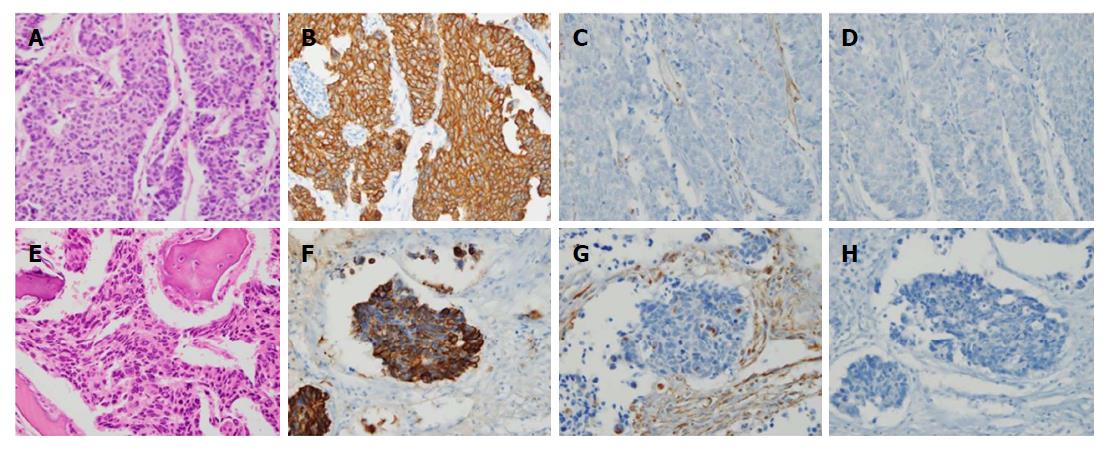Copyright
©The Author(s) 2018.
World J Gastroenterol. Jan 7, 2018; 24(1): 150-156
Published online Jan 7, 2018. doi: 10.3748/wjg.v24.i1.150
Published online Jan 7, 2018. doi: 10.3748/wjg.v24.i1.150
Figure 3 Histopathological and immunohistochemical findings of stomach cancer (A-D) and metastatic bone lesion (E and F).
A: The stomach tumor consisted of solid nests of poorly differentiated tumor cells, with ovoid nuclei and indistinct cytoplasm (hematoxylin-eosin, × 400); B-D: Immunohistochemistry showed that the tumor cells exhibited diffuse immunoreactivity for cytokeratin AE1/AE3 (B: × 400), but were negative for vimentin (C: × 400) and synaptophysin (D: × 400), which supported the diagnosis of poorly differentiated adenocarcinoma; E: The bone tumors were identified as poorly differentiated tumors (hematoxylin-eosin, × 400), with histologic and immunohistochemical features identical to those of the carcinoma of the stomach that were positive for cytokeratin AE1/AE3 (F: × 400) and negative for vimentin (G: × 400) and synaptophysin (H: × 400).
- Citation: Choi YJ, Kim DH, Han HS, Han JH, Son SM, Kim DS, Yun HY. Long-term survival after gastrectomy and metastasectomy for gastric cancer with synchronous bone metastasis. World J Gastroenterol 2018; 24(1): 150-156
- URL: https://www.wjgnet.com/1007-9327/full/v24/i1/150.htm
- DOI: https://dx.doi.org/10.3748/wjg.v24.i1.150









